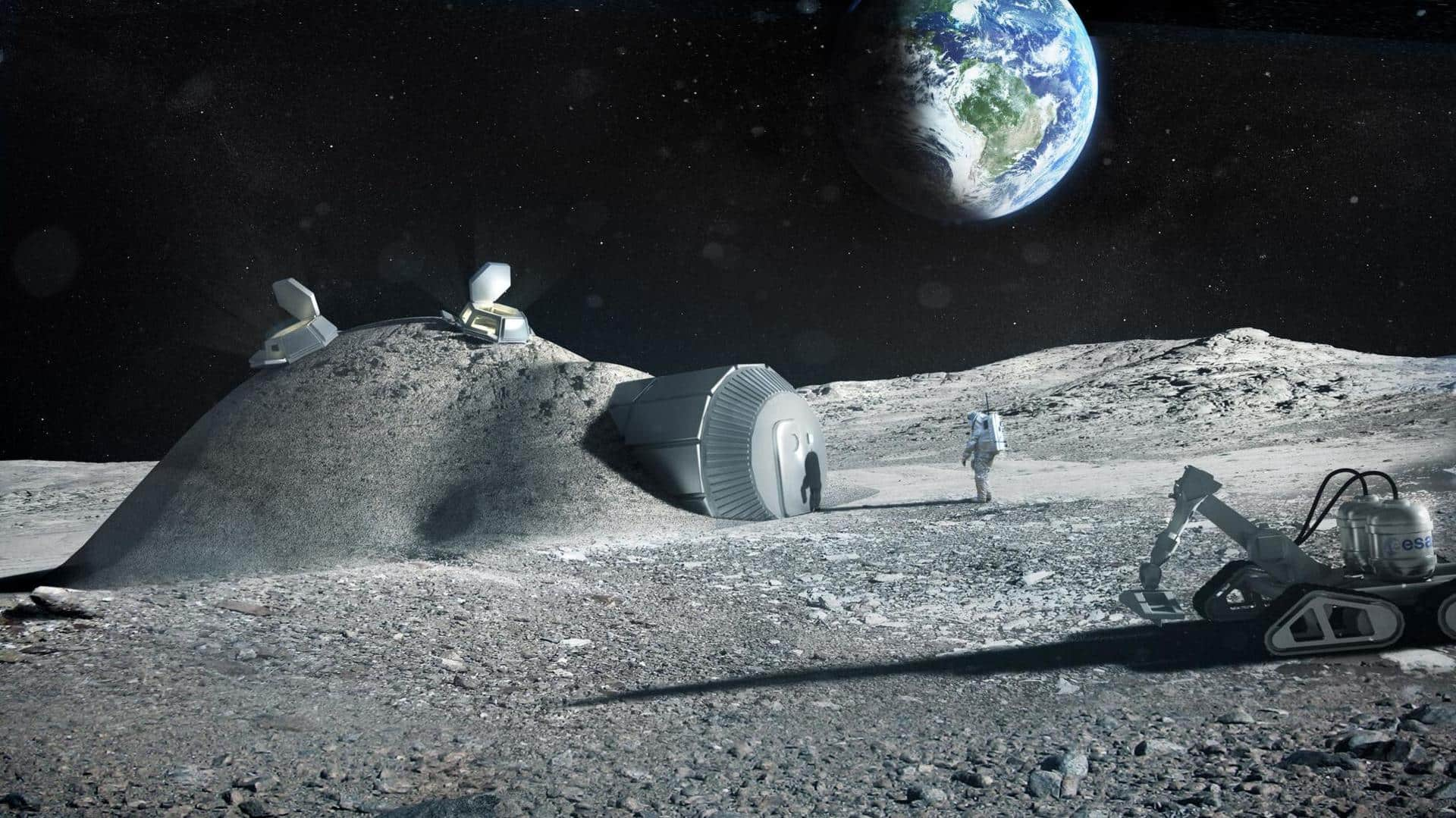
China aims to test 3D printing on Moon: Here's how
What's the story
China has a number of lunar missions lined up in the coming years, which include bringing back samples from the far side of the Moon, for the first time ever. In the latest development, the chief planner of China's lunar programs revealed that the Chang'e 8 mission will be used to test the feasibility of 3D printing to construct buildings on the Moon.
Context
Why does this story matter?
It has been known for some time now that certain space agencies intend on setting up a permanent lunar base. While that might be a long way off, the process would require extensive planning. Shipping all the necessary materials required for construction from Earth is unthinkable, and it would involve tremendously high costs. That's where 3D printing technology would change things, for the better.
Chang'e mission
The Chang'e 8 mission will land on Moon's south pole
The Chang'e 8 robotic probe is planned to touch down on the south pole of the Moon, where it will carry out on-site investigations of the environment and mineral composition at the site of the landing. The mission will explore the possibility of using advanced technologies, like 3D printing, for construction using lunar materials in the future.
Official words
'Lunar soil will be used as raw material'
"If we wish to stay on the Moon for a long time, we need to set up stations by using the Moon's own materials," said Wu Weiren of China National Space Administration. Lunar soil will be the "raw material" and it'll be "printed into construction units." Chinese universities "have already begun studying the possible applications of 3D printing technology on the Moon," he added.
Upcoming mission
Chang'e 8 will be launched in 2028
Chang'e 8 is scheduled to liftoff in 2028. It will be preceded by the Chang'e 6 and Chang'e 7 expeditions. The Chang'e 6 robotic mission will land on the far side of the Moon and will return to Earth with soil and rock samples. The Chang'e 6 probe will comprise four components-a lander, an orbiter, an ascender, and a reentry module.
Definition
What is the near side of the Moon?
The tidal friction arising as a result of the Earth's gravitational forces has caused the Moon to become tidally locked, which means the same side of the Moon faces the Earth all the time. This face of the Moon is classified as the near side. China's Chang'e 5 mission has already brought back specimens from the near side of the satellite.
Information
Chang'e 6 will return first-ever samples from Moon's far side
The other side of the Moon, or the far side, is what scientists are particularly interested in. "If Chang'e 6 succeeds, it will be the first time we get samples from the moon's far side," said Weiren. The mission is slated for launch around 2025.
Chang'e 7
Chang'e 7 will look for ice on the Moon
Chang'e 6 will be followed by Chang'e 7, in 2026. The latter will perform "high-precision investigations." "The Chang'e 7 mission will look for traces of water on the South Pole, investigate the environment and weather there, and survey the landform," claimed Weiren. "The probe will carry a 'flyby craft' tasked with flying into pits on the lunar surface to look for ice," he added.
Information
Chang'e 7 will also be tasked with detecting natural resources
Weiren says that Chang'e 7 will try to detect the natural resources beneath the lunar South Pole's surface. "Mission planners are trying to assess if we can use the probe to dig into the surface and study underground structures and their composition," he said.